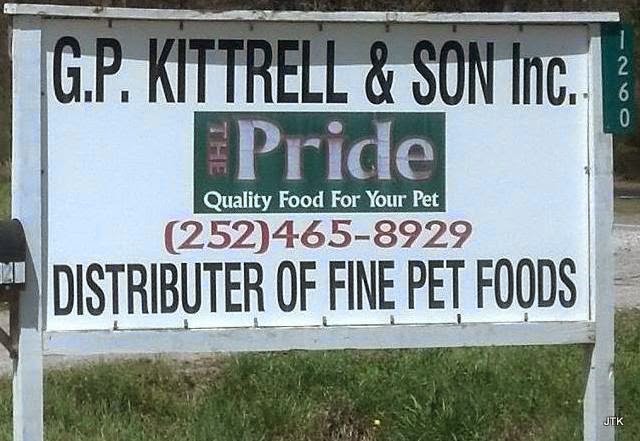
COOL SEASON
Austrian Winter Peas
Type: Cool season annual legume
Uses: Austrian winter peas will make a great food plot or addition to a mixture planted in the fall to attract deer. Highly favored by whitetails, these fast growing peas will attract deer to a plot soon after germination, making them a preferred choice for bow hunters.
Planting Information:
Date: September-November
Rate: 50 pounds/acre or 1 1/4 pounds/1,000 sq.ft.
Depth: 1/2"
Birdsfoot Trefoil
Type: Perennial legume
Uses: Birdsfoot Trefoil will make great forage for deer, turkey and other wildlife in harsh conditions. It is very tolerant of poorly drained, lowland or acidic soils. It is drought resistant and salt tolerant but not adapted to the Deep South. Trefoil is very slow to establish, but once established it is persistent and resistant to browsing.
Planting Information:
Date: August-October and February-April
Rate: 10 pounds/acre or 1/4 pound/1,000 sq. ft.
Depth: 1/4"
Sweet Blue Lupine
Type: Cool season annual legume
Uses: Blue Lupine has become a favored planting by many wildlife enthusiasts wanting to attract deer, turkey, quail and other game. It produces excellent high quality deer feed in the fall and spring months. Lupine produces a beautiful blue spike-like bloom and also makes excellent seed production for game birds.
Planting:
Date: North: April-May
South: September-October and March-April
Rate: 100 pounds/acre or 2 1/2 pounds/1,000 sq. ft.
Depth: 1" maximum
Arrowleaf Clover
Type: Cool season reseeding annual legume
Uses: Arrowleaf clover is a very high yielding and high quality reseeding clover. The hollow stemmed plants have large blooms that are pink, white and purple in color. It is late maturing and will usually be productive into late July. It will tolerate low pH and sandy soils. This heavy reseeder makes a great plot for deer and turkey.
Planting Information:
Date: September-October
Rate: 8 pounds/acre or 3 ounces/1,000 sq.ft.
Depth: 1/4" maximum
Alfalfa
Type: Cool season perennial legume
Uses: Alfalfa makes an excellent quality forage for deer, turkey and rabbits. High in protein and with tremendous yields on good, well-drained soil, Alfalfa provides nutrition during fall, spring and summer.
Planting Information:
Date: September-October and March-May
Rate: 20 pounds/acre or 1/2 pound/1,000 sq.ft.
Depth: 1/8" maximum
Crimson Clover
Type: Cool season reseeding annual legume
Uses: Crimson clover, by far, is the most widely used annual clover for feeding and attracting deer, turkey, rabbits and other game species to food plot areas. It is a widely adapted plant that tolerates different soil types and low pH soils. It is an excellent and dependable re-seeding clover that is early maturing. Crimson works well in mixtures with small grains or later maturing clover such as white and red.
Planting Information:
Date: September-October
Rate: 20 pounds/acre or 1/2 pound/1,000 sq. ft.
Depth: 1/4"
Hairy Vetch
Type: Cool season reseeding annual legume
Uses: Hairy vetch makes an excellent addition to fall planted deer mixtures. Its spring forage production is very palatable to deer and turkeys and it makes an excellent seed crop for quail and turkey.
Planting Information:
Date: September-October
Rate: 20 pounds/acre or 1/2 pound/1,000 sq. ft.
Depth: 1/2" maximum
Red Clover
Type: Cool season perennial legume
Uses: Red clover is a winter-hardy legume that is excellent for deer and turkey food plots. It is a highly productive, late maturing clover growing from 18 to 30 inches tall during early to mid summer. It is very high yielding but usually only lasts about two years before needing to be replanted.
Planting Information:
Date: September-October and February-April
Rate: 15 pounds/acre or 6 ounces/1,000 sq. ft.
Depth: 1/4" maximum
Subterranean Clover
Type: Cool season annual legume
Uses: Subterranean clover is a very low growing, shade-tolerant clover that will tolerate acidic soil conditions.
Planting Information:
Date: September-October
Rate: 20 pounds/acre or 1/2 pound/1,000 sq. ft.
Depth: 1/4"
White Ladino Clover
Type: Cool season perennial legume
Uses: Ladino clovers grow best when planted with small grains such as wheat, oats or rye. They can be overgrazed by deer in the young seedling stage and the grains can help take the early grazing pressure off the clover. Ladino clovers are very high yielding and high quality providing excellent protein for fall, spring and early summer. Ladino clover will generally last for 3 to 5 years as a perennial. Ladino clover makes an excellent food plot for deer and turkey as well as produce insects for quail chicks and turkey poults. Use on clay or loam soils or bottom land for best results.
Planting Information:
Date: North: August 15-October 1
Frost seeding: January-February, March-May
South: September-December
Rate: 8 pounds/acre or 3 ounces/1,000 sq.ft.
Depth: 1/4" maximum
Type: Cool season annual grain
Uses: Wintergrazer is well adapted throughout many parts of the U.S. It is excellent in combination with clover as a nurse crop because of its early maturity and ability to maintain its upright growth. It does not mat down and smother the clover that is getting established underneath it. It can reach a height of 4 to 5 feet tall and is very fast to establish, producing deer feed in as little as 14 days in ideal conditions. Wintergrazer rye grain is preferred by deer and is the most cold tolerant of all the cereal grains. Wintergrazer 70 is a rye grain and should not be confused with ryegrass.
Planting Information:
Date: September-November
Rate: 100 pounds/acre or 2 1/2 pounds/1,000 sq.ft.
Depth: 1/2"












